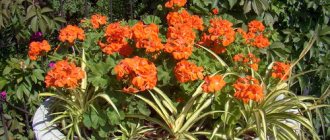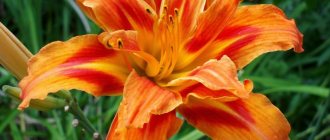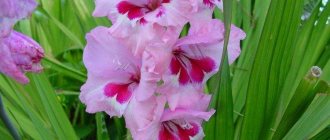Boxwood is a genus of Boxwood trees, represented by evergreen shrubs and trees. They are distinguished by very slow growth. They reach a height of 1.5 to 15 meters. The trunk diameter does not exceed 15 centimeters. Boxwood has round, lush green, leathery leaves. The boxwood genus has more than 100 species
The growing area of boxwood in Russia is not large. This is the Black Sea coast and the Caucasus. Around the world, boxwoods grow in the south of Equatorial Africa, on the island of Madagascar, Mexico, Cuba, the British Isles, China, Japan, Asia Minor and Transcaucasia.
Slightly acidic soils are preferred for boxwood. In general, boxwood is an unpretentious plant. They grow on the edges of forests, dark deciduous forests, and rocky screes. Very shade-tolerant, but also thermophilic.
Lumber
Boxwood bushes and trees are very popular for landscaping and ornamental gardening. Due to its long growth, the plant is capable of maintaining any shape for a long time. Plus, boxwood tolerates shaping and cutting well. Actively used in Topiary (bush sculpture)
All parts of boxwood contain alkaloids that are poisonous to humans and animals. 0.1 mg of cyclobuxin D, one of the alkaloids found in all parts of the boxwood tree, when taken orally, is a lethal dose for a dog.
Description of boxwood
There are approximately three dozen types of boxwood. Although the plant is poisonous, it is known for its medicinal and antibacterial qualities.
Boxwood flowers do not play a decorative role - they are small and inconspicuous. The photo of boxwood shows that its fruits are hard, three-lobed boxes, inside of which there are small black seeds.
General information, places of growth
Boxwood (Buxus colchica) is a shrub or small tree with a well-defined trunk and crown, with small, oval, dense, lingonberry-like leaves. They are located on the branches opposite, in pairs. Boxwood foliage is very dense and does not allow light to pass through.
A notable feature of boxwood is its exceptional shade tolerance. In this respect it is superior to all our other tree species. Boxwood trees can grow in the deep shade of mountain gorges under a dense, very dense forest canopy. The growth rings of boxwood are so small that they are indistinguishable to the naked eye.
One of the relict species listed in the Red Book is Colchian boxwood. This is an evergreen tree with small leathery leaves, up to 15-21 meters high, or a shrub. In the dense thickets of Colchian boxwood, twilight always reigns. Light green moss covers the trunks and hangs from the branches in intricate strands. Knobby tree roots intertwine on the soil surface. The boxwood crown in the plantings is quite light and multi-branched. The tree blooms in early spring, spreading its aroma. The fruits ripen in summer. The capsules open with a bang, scattering small black seeds up to 3 meters away.
Boxwood is a very slow growing species. Its increase in diameter per year is only one centimeter. It lives up to 500-600 years, but rarely reaches 60 centimeters in diameter.
Boxwood is found in Europe - in Northern France, Spain, Switzerland, Greece, but in the form of a shrub that has no timber trade value; on the islands of the Mediterranean Sea - Sardinia, Corsica and Minorca it reaches significant sizes. In Asia, boxwood grows on the Turkish coast of the Black Sea, in China - in the Shan Xi province, in India - on the southern slope of the Himalayan ridge; it also grows in Japan and Iran. Colchian boxwood was identified as a species by A.I. Poyarskaya in 1947. Its habitat is scattered. In Abkhazia, it is distributed south of the Psezuapse River to an absolute altitude of 1000 meters above sea level. Good plantings of Colchian boxwood are found in the gorges of the Yupshara, Gega, and Bzyb rivers. The seaside boxwood near the village of Tskurchili, Ochamchira district, also deserves attention.
As a tree species of a mild southern climate, boxwood most often settles in deep, windless gorges with stagnant air, under the protection of hornbeam, beech, ash, linden and other species. On Cape Pitsunda (the territory of the reserve) there are boxwood plantations with a total area of 64 hectares. They are valuable natural monuments and, undoubtedly, are of great scientific interest. One boxwood grove is located in the northwestern part of the reserve on the coastal strip, the other is near the village of Lidzava. The average height of trees here is 7-10 meters; age ranges from 50 to 180 years. Sometimes boxwood forms the second tier, and the first is represented by pine, hornbeam, and hornbeam.
In the northwestern part of the Pitsunda Grove, the plantings suffered greatly from the systematic impact of storm waves and splashes. After the storms of 1968 and 1970, trees dried out completely on an area of over two hectares. Other species (hornbeam, hornbeam) suffered less damage and quickly recovered.
Boxwood regeneration occurs very well in the first years, but with age a lot of it dies off. The undergrowth is represented by hawthorn, blackberry, broom, privet, and dogwood.
Boxwood grows very slowly, and in former times few people worried about its reproductive abilities. Currently, the need to restore boxwood trees is becoming an important problem. In this regard, it has become relevant to study the bioecology of the breed and those physical and geographical conditions in which boxwood develops better and grows faster.
How to plant boxwood correctly
This shrub is best planted in neutral acidic loamy soil. Soil fertility does not play a significant role. The main thing is to ensure looseness, breathability and good drainage. Then the boxwood will grow strong, with a thick, shiny crown.
The plant does not tolerate stagnation of water. In addition, heavy or acidic soil is not suitable for planting boxwood. Sandy soil requires the addition of slaked lime or aged compost.
It is allowed to plant buscus in pots, digging them directly into the ground. Boxwood can survive the winter in them. In addition, young seedlings should also be kept in pots for a couple of years before being planted in open soil.
Boxwood should be planted in April-May, when stable warm weather sets in. Transplanting adult bushes is possible not only in spring, but also in summer and autumn.
You need to dig up grown plants with extreme caution so as not to damage the root system. It is advisable to ensure that the stone tree can grow in one place. To do this, it will be enough to periodically replace the top layer of soil.
The volume of the hole should be twice the volume of the roots. The floor of the pit should be covered with a mixture of river sand, humus and turf in a ratio of 1 to 4 to 2. The addition of potassium fertilizer is allowed. Next, watering is necessary. Only then is the plant placed in the hole. After the roots are straightened, it is covered and the tree trunk area is thoroughly compacted.
Box borders are the easiest way to do this
In our gardens, boxwood borders around flower beds are the most popular. They are very easy to make. Simply plant boxwood seedlings next to each other and then trim them regularly to the desired shape.
If you want a thick boxwood wall, the distance between the seedlings should be about 10-15 cm. If the border is to consist of boxwood balls, the intervals at which we plant the tiny bushes will depend on how many bullets we want to get. The larger the size, the longer the distance should be.
Interesting ideas for decorating the garden with boxwood bushes
Boxwood can safely participate in any landscape design of the yard. You can use it to create many different ideas. The most common option for decorating an area with boxwood is to plant bushes along the path.
This type of landscape design will be easily accessible to almost every person. It's easy to repeat and do. Almost all landscape ideas with boxwood are very simple and ingenious. They can be given various shapes, beautify the area, or design the path in an original way.
All this will successfully complement the garden and fill its interior with originality, interesting features, and individual characteristics. In order to add individual features, boxwood needs to be trimmed every season.
Procurement of valuable raw materials
Typically, boxwood bark and foliage are used to prepare decoctions and tinctures. The solid component is carefully cut from plants that are 5 full years old. The procedure is performed after the buxus blooms. The resulting raw material is thoroughly washed. Cut into pieces. Dry thoroughly at room temperature.
The leaves are collected in summer or spring, when the bush blooms luxuriantly. Select plates without visible damage. Wash under the tap and dry in a warm room away from direct sunlight. Store medicinal raw materials in fabric bags at a temperature of 20°C.
We studied the beneficial properties of boxwood and were convinced of the value of this evergreen plant. A unique set of chemical compounds helps fight illnesses. Simple recipes for potions can be easily created at home. Particular attention should be paid to contraindications and overdose.
Caring for indoor plants
Pretty small boxwood trees will become the most unusual decoration for home winter gardens and ordinary window sills.
Caring for them is not much different from the procedures intended for their street counterparts.
- For the tree, choose a place that is not on the sunny side; the soil in the pot is covered with pebbles or moss is planted.
- It is worth considering that in a large pot the boxwood will feel too comfortable and will not grow.
- By the way, the plant will gain no more than 5 centimeters in height per year, so it will not require large spaces.
In the summer, the pot with the green inhabitant can be moved to an open space (balcony, terrace, veranda); in winter, the optimal temperature is 12-18 degrees.
The boxwood tree is believed to have mystical properties. It protects an apartment or plot from evil spirits, and its owners from the evil eye and ill-wishers.
Overdose and contraindications
Regardless of their origin, all medications are taken as prescribed by a doctor. Only an experienced specialist has the right to prescribe the required dose.
Violation of the rules leads to poisoning, which causes:
- nausea;
- vomiting;
- diarrhea;
- suffocation;
- muscle cramps.
In some cases, overdose is fatal. There is a group of people who are contraindicated from using boxwood decoctions. This includes asthmatics, allergies and stomach ulcers. It is undesirable for pregnant women to take such “medicines” before childbirth and during lactation.











